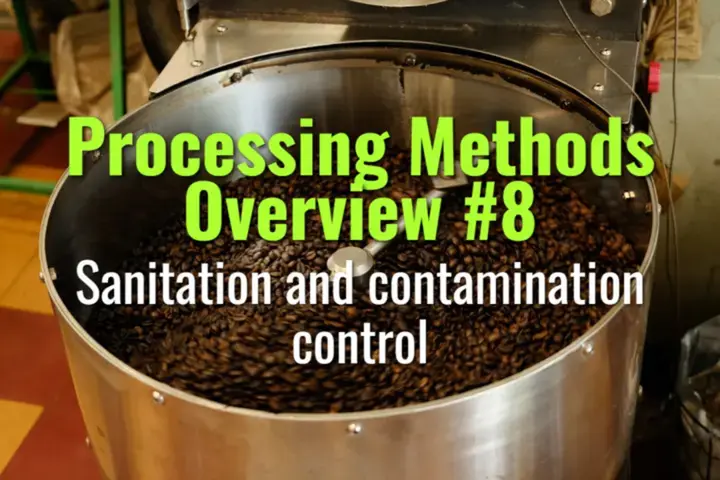Sanitation and contamination control
This topic explains the importance of sanitation in coffee processing, the risks of contamination, and the best practices used to ensure clean, consistent, and high-quality coffee.
- Coffee Basics Nerds
- 2 min read
Article 8 of 12 in Processing Methods Overview/

Why Sanitation Matters
- Coffee processing involves fermentation, washing, and drying, stages vulnerable to microbial contamination.
- Poor hygiene can introduce undesirable microbes, leading to defects such as sourness, mold, or phenolic flavors.
- Clean facilities protect both product quality and worker safety.
Sources of Contamination
- Dirty fermentation tanks: Residual mucilage and microbial buildup.
- Contaminated water: Can introduce harmful bacteria and off-flavors.
- Improper drying areas: Contact with soil, animals, or mold spores.
- Handling equipment: Dirty pulpers, drying racks, or storage bags.
- Poor worker hygiene: Increases risk of spreading contaminants.
Best Practices for Sanitation
1. Facility & Equipment
- Regular cleaning of pulpers, fermentation tanks, and washing channels.
- Use food-grade materials for equipment where possible.
- Drying patios and raised beds disinfected or cleaned between harvests.
2. Water Quality
- Use clean, potable water for washing.
- Treat wastewater before disposal to prevent contamination cycles.
3. Fermentation Management
- Remove floating/defective cherries before fermentation.
- Monitor fermentation closely to prevent spoilage.
- Avoid mixing lots at different fermentation stages.
4. Drying & Storage Hygiene
- Keep drying surfaces elevated and free from soil contact.
- Protect drying coffee from rain and animals.
- Store dried parchment in clean, ventilated, pest-free warehouses.
5. Worker Hygiene & Training
- Train workers in sanitation protocols.
- Provide protective clothing and handwashing facilities.
- Enforce clean handling during all stages.
Consequences of Poor Sanitation
- Flavor defects: musty, earthy, phenolic, sour, or moldy cups.
- Reduced market value and rejection in specialty coffee markets.
- Losses for farmers due to contamination and spoilage.
Lasting Importance
Sanitation and contamination control are non-negotiable foundations of quality coffee processing. Clean facilities, good water, and disciplined handling ensure flavor clarity, consistency, and food safety, safeguarding both farmer reputation and consumer trust.
You might also like:
- Tags:
- Lasting Importance
- Best Practices
- Specialty Coffee
- Food Safety
- Matters Coffee
- Flavor Clarity
- Raised Beds
- Market Value
- Quality Coffee
- Water Quality
- Consumer Trust
- Coffee Processing
- Worker Safety
- Drying Storage
- Regular Cleaning
- Farmer Reputation
- Fermentation Tanks
- Increases Risk
- Clarity Consistency
- Defective Cherries
- Non Negotiable
- Washing Channels
- Coffee Markets
- Mold Phenolic
- Pest Free